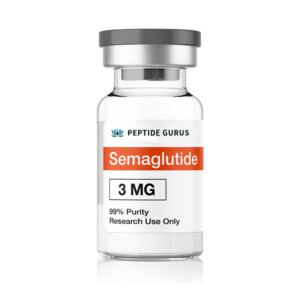In the rapidly evolving landscape of type 2 diabetes (T2D) treatment, Orforglipron has emerged as a groundbreaking candidate that bridges scientific innovation with patient-centric care. As a leading oral small-molecule GLP-1 receptor agonist, Orforglipron is redefining possibilities for diabetes management—addressing longstanding challenges of treatment adherence while delivering robust clinical outcomes that align with the latest FDA guidance for metabolic therapies.

To understand Orforglipron’s impact, it’s first helpful to grasp its mechanism. Like the natural GLP-1 hormone produced in the gut, Orforglipron binds to GLP-1 receptors in the pancreas, brain, and digestive system. This activation triggers two key effects for diabetes control: it stimulates the pancreas to release insulin (lowering blood sugar) and reduces glucagon secretion (preventing excess sugar production) . Unlike traditional injectable GLP-1 agonists, Orforglipron’s small-molecule structure allows oral administration—eliminating the need for needles and making daily use far more accessible .
A critical advantage of Orforglipron is its flexibility: it can be taken once daily without restrictions on food or water intake . This solves a major barrier for patients, as many oral GLP-1 drugs require fasting to ensure absorption. For those managing diabetes alongside busy lives, this convenience translates to higher adherence—a factor the FDA increasingly emphasizes in evaluating new therapies, as consistent use directly improves long-term glucose control.
Clinical Evidence: Orforglipron’s Efficacy in Diabetes Research
Phase 3 trials have solidified Orforglipron’s position as a top-tier diabetes treatment. In the ACHIEVE-1 trial, 559 T2D patients taking Orforglipron saw their 糖化血红蛋白 (A1C)—a key measure of long-term blood sugar—drop by 1.3 to 1.6 percentage points over 40 weeks . For patients on the highest dose (36mg), the results were even more striking: A1C fell by 2.2 percentage points, with over 65% of participants reaching an A1C ≤6.5%—the threshold for non-diabetic glucose control defined by the American Diabetes Association .
These outcomes not only meet but exceed FDA expectations for new diabetes therapies, which prioritize both A1C reduction and secondary benefits like weight management. Orforglipron delivers on the latter: high-dose patients lost an average of 7.3kg (16lbs) over 40 weeks, with weight loss continuing to rise at the study’s end (indicating no plateau) . In a head-to-head Phase 3 trial (ACHIEVE-3) against oral semaglutide (a leading GLP-1 drug), Orforglipron outperformed on all fronts: 8.9kg weight loss vs. 5.0kg, and superior improvements in “bad” cholesterol (-18.7% vs. -9.2%) and blood pressure (-8.2mmHg vs. -4.5mmHg) . These cardiometabolic benefits align with the FDA’s 2025 focus on “comprehensive metabolic care” for diabetes, which requires new drugs to address not just blood sugar but also related cardiovascular risks.
Safety Profile: Aligning with FDA Standards
The FDA places rigorous emphasis on safety, and Orforglipron’s profile has stood up to scrutiny. Most side effects are mild to moderate gastrointestinal issues—such as nausea, diarrhea, and constipation—consistent with other GLP-1 agonists . Importantly, these symptoms often diminish with dose escalation, and the treatment discontinuation rate due to adverse events is low (around 8%) .
A key concern in diabetes drug development is liver safety, but Orforglipron has addressed this: trials showed no significant liver problems, with liver enzyme levels actually decreasing slightly from baseline . This aligns with the FDA’s 2025 guidance encouraging inclusion of patients with mild liver enzyme elevation in trials, as Orforglipron performed well in this real-world subset . For patients and providers, this safety data builds confidence that Orforglipron balances efficacy with tolerability.
FDA Approval Timeline and Future Impact
Eli Lilly, the developer of Orforglipron, plans to submit a New Drug Application (NDA) for T2D treatment to the FDA in 2026 . This timeline reflects the FDA’s requirement for longer-term safety data (24 months of exposure) for diabetes indications, compared to 18 months for weight management . If approved, Orforglipron will become the first oral small-molecule GLP-1 agonist for diabetes—filling a critical unmet need for patients who avoid injectables.
For the broader diabetes community, Orforglipron represents a paradigm shift. With global T2D cases projected to reach 760 million by 2050 , accessible, effective treatments are urgent. Orforglipron’s oral administration, no dietary restrictions, and global supply guarantee (per Eli Lilly) mean it can reach underserved populations—from rural areas lacking injection support to patients with needle phobia.
Common Questions About Orforglipron for Diabetes
Q: Do I need to change my diet to take Orforglipron?
A: No—Orforglipron is the first oral GLP-1 agonist that doesn’t require fasting or water restrictions. You can take it once daily at any time, making it easy to fit into your routine .
Q: Is Orforglipron better than injectable diabetes drugs?
A: It offers unique advantages: oral administration eliminates injection discomfort, and its Phase 3 data shows comparable or superior A1C reduction and weight loss to injectables like dulaglutide . It’s ideal for patients who prefer pills over shots.
Q: When will Orforglipron be available for diabetes treatment?
A: Eli Lilly plans to file for FDA approval in 2026. If approved, it could launch shortly after—joining other GLP-1 therapies but as a more convenient oral option .
